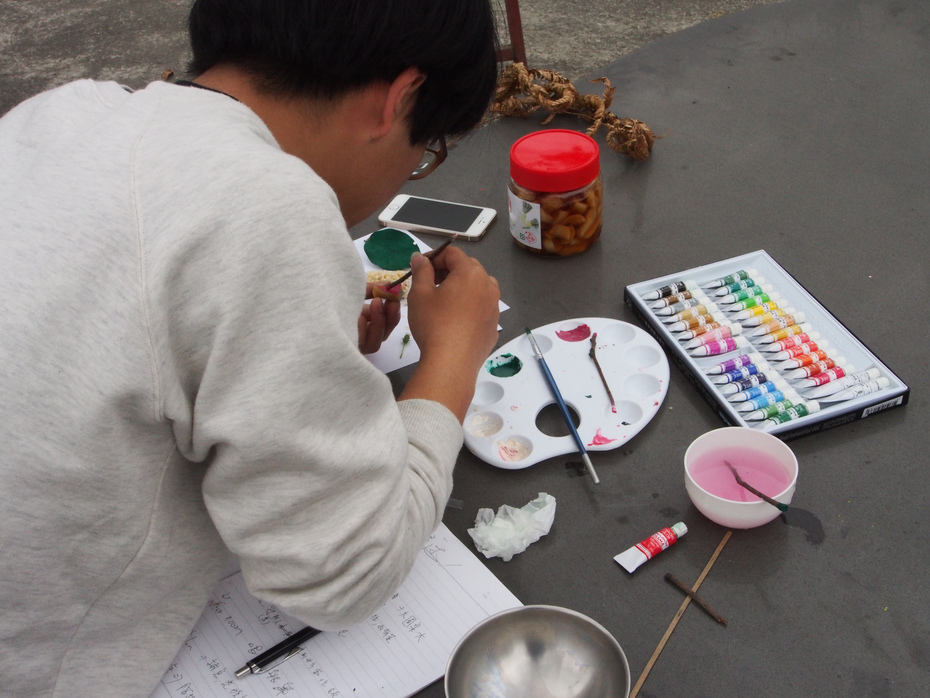Feeling rooted … and free
The World in Books – Taiwan
Baobab Books promotes diversity in children and youth literature. In our work we focus especially on minorities and on the situation of indigenous peoples, for in many places these groups have to fight for their recognition and continued vibrancy of their culture – a field in which children's literature can play an important role.
To promote and support Taiwan's various indigenous communities, Baobab Books has cooperated with Taitung National Living Art Centre from 2013 until 2019. The following report of a workshop in the Yuli Township gives insight in the work that as been conducted.
The Yüli township lies in the south of the province of Hualien. The broad plain is characterised by paddy fields, the sides of the valley are forested and inhabited in places, especially by the indigenous Amis people. Tea farmers produce the country’s typical Oolong tea on many fields in the terraced hills.
The fifth workshop that Baobab Books has staged, in partnership with the National Living Art Center Taitung, took place in May 2018, in the compound of the primary school in Yüli. Just a few years ago the small house, which serves as a communal hall, was derelict. An initiative launched by a few members of the community restored it and made it habitable again. Everyone who was able to brought something along to furnish the place or actively helped in the renovation. Mr. Ming Chien, who is simultaneously the secretary of the local primary school, was the driving force behind the initiative. The space that has been created there is more than just a social meeting place for villagers. In the section facing the road there is a small shop for local products, as well as a kitchen. The pupils learn how to prepare traditional dishes there. Once a week there is a communal lunch, with the parents of each pupil contributing something to eat.
Do not wait
Many Amis live in the area around Yüli. The Amiss are one of Taiwan’s largest indigenous ethnicities. It is very important to Ya-Chi, an energetic teacher at the village school, to advance diversity in the school. All of the village’s children – whether they belong to an indigenous ethnicity or not – learn songs and vocabulary – of a respectable size – in the language of the Amis, together with various cultural customs. There is no feeling of ‘us and them’; the aim is to have everyone feel that they belong and are equal, irrespective of cultural background.In his opening speech, Ming Chien underlines that “there are two central messages for the children in our school. Do not wait until you’re given something in life; and everyone must know who she or he is and where he or she comes from.” This hit the nail square on the head for the spirit in which we all wanted to work during this week.
Changing the perspective
This time the programme is geared at advanced illustrators and artists. The National Living Arts Center selected nine participants for this workshop. Applicants had to put in for a place with a motivational essay and present a concept for a concrete illustrated book project. Some of them attended Baobab Books’ basics course a few years ago, others have acquired their illustrational and/or story-telling skills elsewhere or studied design or art.
The workshop is launched by each participant presenting his or her project and formulating the questions they want to address in this workshop, the issues they want to work on and the field in which they want to receive methodological assistance. The range of subjects includes the storyteller’s perspective, the narrative arc, the relationship between text and image, as well as practical aspects concerning format, length or typography; and finally, of course, the key question of how (indigenous) identity can be depicted in a children’s book.
After the introductory round, which includes each person creating a self-portrait, I ask all them all to put their started projects aside for a moment, and then to re-tell their story anew, from a different perspective and in just five text/image sequences. In the subsequent open discussion the artists recount their insights. Some of them have realised what they would like to change in their stories, others have concluded that they would like to start again completely from the beginning. One artist reports that “it became clear to me that my story wouldn’t function like this. I have to approach the linking of the text and the images in a completely different way.” Someone else became aware of which elements require far more precise research to be able to transmit the correct content. There are many more important insights and we are all set for an interesting week together …
→ Read the complete Project Report 2018
Sonja Matheson
© 2018 Baobab Books, Basel
We thank the National Living Art Center in Taitung for its kind cooperation.














